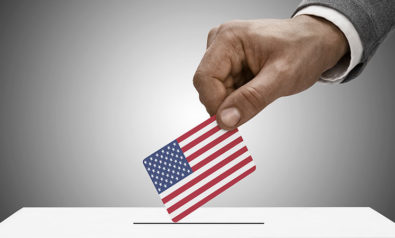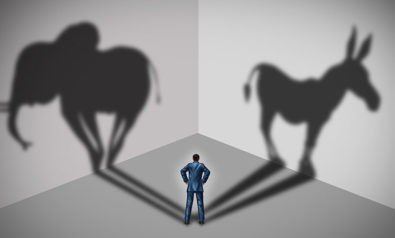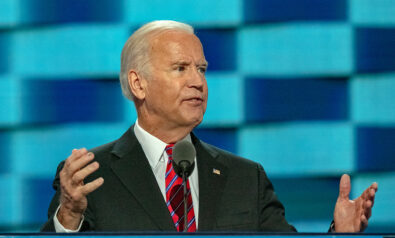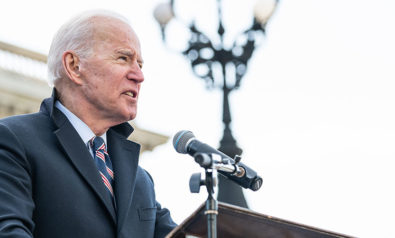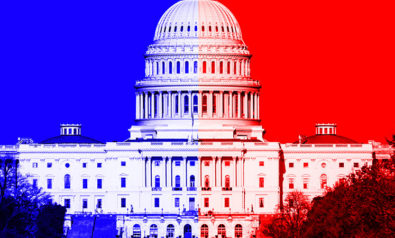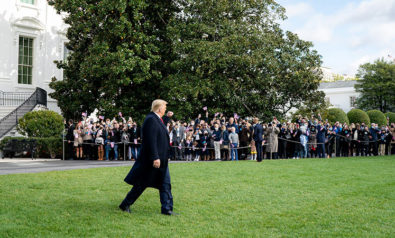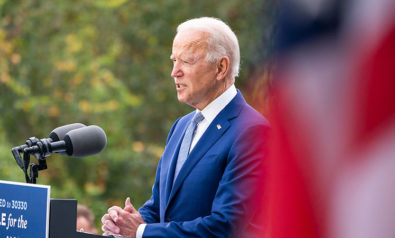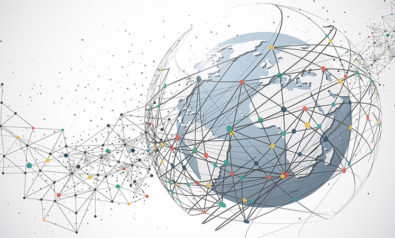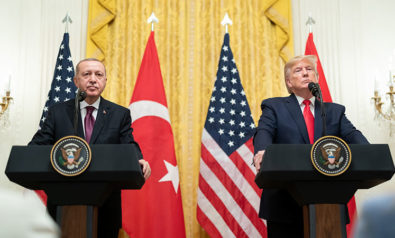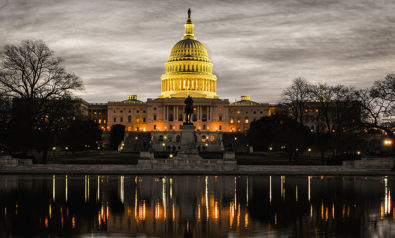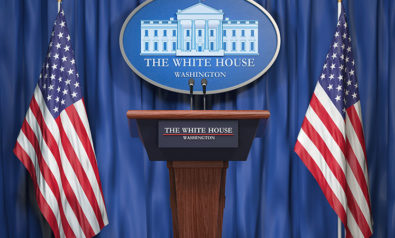With elections due on November 3, the Federal Bureau of Investigation has busted a plot against Michigan Democratic Governor Gretchen Whitmer. An armed militia allegedly planned to abduct and overthrow her. Whitmer had ordered stringent lockdown measures to curb the spread of the coronavirus that many Michiganders opposed and that the state’s Supreme Court recently ruled against.
Scroll down to read more in this 360° series
Trouble has been brewing in Michigan for a while. In May, armed protesters stormed the state capitol building. Such anger has been rising in much of the United States along regional, race and class divides. This year, a spate of police killings ignited outrage and Black Lives Matter (BLM) protests erupted. On June 6, half a million people turned out in nearly 550 places across the US. According to some analysts, the US is at its most divided since the 1861-65 Civil War.
Such is the rancor in the country that President Donald Trump has refused to participate in a virtual town hall debate, accusing the bipartisan debate commission of bias. In the first debate, Trump and his challenger Joe Biden traded insults, causing many to term it the ugliest such spectacle since televised presidential debates kicked off in 1960. This has grave implications for the elections and American democracy itself.
The Story of the 2020 US Election
The US is a young country with an old democracy. On April 6, 1789, George Washington was unanimously elected president. This was three months before a mob in Paris stormed the Bastille on July 14, kicking off the French Revolution.
In contrast to the French who now have a fifth republic, Americans have stuck with their first one. The US Constitution is venerated in the same way as the Bible and has been amended a mere 27 times since 1787. The last amendment is of 1992 vintage and neither Republicans nor Democrats are proposing further changes. Despite the Civil War, the American republic, its democratic experiment and its Constitution have endured to this day.
American democracy follows a quadrennial cycle. Every four years, Americans go to the polls to elect the president and vice president. At the same time, they also vote in 435 members of the House of Representatives, the lower house of the US Congress that controls the purse, for two-year terms. Voters also get to pick around a third of the seats in the Senate, the upper house that confirms appointments — including those to the US Supreme Court — for six-year terms.
This year, 35 Senate seats are in play at a time when Trump has nominated Amy Coney Barrett for the Supreme Court after the death of Justice Ruth Bader Ginsburg. In the US, judges are appointed for life. Barrett is a conservative Catholic while Ginsburg was a liberal icon. The 48-year-old Barrett would give conservatives a 6 to 3 advantage vis-à-vis liberals in the Supreme Court. It could potentially lead to an overturning of the landmark 1973 ruling in Roe v. Wade that legalized abortion.
Elections for the House of Representatives and the Senate are relatively straightforward. All American citizens above the age of 18 can vote for representatives of their congressional districts in a first-past-the-post system. They also vote for two senators to represent the state they live in. When it comes to electing a president, the Electoral College comes into play. A total of 538 Electoral College votes are distributed among 50 states. Americans vote for presidential candidates in their states. The candidate who wins the majority in a state gets the Electoral College votes assigned to that state.
To become president, a candidate must win 270 or more Electoral College votes. Most of the time, the winning candidate has won both the popular and the electoral college votes. However, this does not always hold true. In 2000, Al Gore won the popular vote but won only 266 Electoral College votes, while George W. Bush won 271. In 2016, Hillary Clinton won the popular vote, but she only won 227 Electoral College votes in contrast to Trump’s 304 because she lost key states by narrow margins. Currently, Biden and the Democrats lead in most opinion polls, but they have not entirely been accurate in the past.
The US has a two-party system with no space for a third party. The Republican Party is conservative. Historically, it stands for smaller government, lower taxes and stronger national security. Called the Grand Old Party (GOP), it opposes abortion, supports gun rights and wants to limit immigration. The GOP has strong support in the more rural parts of the country such as the South, Southwest and Midwest. The Democratic Party is the liberal political party. Traditionally, it supports greater governmental intervention, higher taxes and more social justice. Democrats support abortion, oppose gun rights and take a more lenient view of immigration. Their power base lies in urban areas that are largely in the Northeast and the West Coast.
Currently, while the Republicans control the Senate and the White House, the Democrats control the House of Representatives. The Democrat-controlled House and the Trump White House have clashed repeatedly over a new stimulus package to a coronavirus-ravaged economy. Prima facie, such partisanship and brinkmanship is not new. This is a recurring feature in American politics. Yet this time it is truly different.
Trump’s election in 2016 was a seismic moment. He was the unlikeliest of candidates who emerged on top in the Republican primaries. During his presidential campaign, he survived many a faux pas and a scandal. In the process, both the Bush and Clinton dynasties bit the dust. Trump won power as a populist and has governed as one.
President Trump has ushered in an era of protectionism, slapping tariffs on many countries, especially China. He has weakened institutions that the US itself created after World War II by threatening to pull out of the World Trade Organization and not paying remaining dues to the World Health Organization after withdrawing the US from it. Early in his presidency, Trump walked away from the 2015 Paris Climate Accord and jettisoned the Trans-Pacific Partnership that underpinned former President Barack Obama’s Asia Pivot.
Why Does the 2020 US Election Matter?
The US election matters not only nationally but also globally. First, Americans are choosing between two poorly-defined but distinctly alternative visions. Donald Trump champions populist nationalism, while Joe Biden supports the post-World War II order. The former will push protectionism and unilateralism further, while the latter will roll back some if not all of Trump’s measures. Under Biden, there will be freer trade and more US support for international institutions. The election result will change the world.
Second, Americans are deciding between two starkly different ways of handling the coronavirus pandemic. Trump has emerged out of hospital after contracting COVID-19 — the disease caused by the novel coronavirus — to greet his supporters from the White House balcony, take off his face mask and declare that the country must get back to business. Biden believes in prudence, wears his mask and proposes following public health guidelines advocating social distancing, limited economic activity and lockdowns in case of spiking infections. Unsurprisingly, the Pew Research Center puts the economy and health care as the voters’ top concerns. The election might reflect the tradeoff that voters are willing to make between the two.
Third, questions about the election’s legitimacy sound louder than at any other time since the Civil War. BLM marches and militia activity are symptoms of a deeper malaise. The US is deeply divided and trust in institutions is running low. At such a time, postal ballots could play a big role in deciding the election. All states provide for voting by post but rules differ widely. The final result could take days or even weeks. Trump has already cast doubts as to the legitimacy of postal ballots and there are real fears about a peaceful transfer of power.
Fourth, law enforcement and criminal justice seem to be key issues for this election. Many voters fear mass protests in many cities. Others believe that the criminal justice system is unjust and victimizes black people, especially young black men. Both rallies in support of law enforcement officials and for defunding the police are taking place across the US. The election will decide the direction of law enforcement and criminal justice in the country.
Finally, the result of the election has immediate global ramifications because Pax Americana is fraying. Like Rome, the US can go to war as was the case with Vietnam and Iraq. Yet like its ancient counterpart, it has been the global guarantor of relative peace. With the US withdrawing from the world stage, countries like Russia, China and Turkey are stepping in to fill the void. Furthermore, what Joseph S. Nye Jr. calls America’s “soft power” seems to be waning.
Some surmise that American superpowerdom is unchallengeable. The US has the space program, the air superiority, the deepwater navy, the cutting-edge technology, leading universities, unrivaled innovation, seductive pop culture, cheap gas, bountiful resources and a relatively youthful population to be top dog. Others see the US as Rome in decline, plagued by corruption, division and discord. The 2020 US election might reveal which of these two views might be closer to the truth, with profound consequences for the history of the world.
The views expressed in this article are the author’s own and do not necessarily reflect Fair Observer’s editorial policy.
For more than 10 years, Fair Observer has been free, fair and independent. No billionaire owns us, no advertisers control us. We are a reader-supported nonprofit. Unlike many other publications, we keep our content free for readers regardless of where they live or whether they can afford to pay. We have no paywalls and no ads.
In the post-truth era of fake news, echo chambers and filter bubbles, we publish a plurality of perspectives from around the world. Anyone can publish with us, but everyone goes through a rigorous editorial process. So, you get fact-checked, well-reasoned content instead of noise.
We publish 2,500+ voices from 90+ countries. We also conduct education and training programs on subjects ranging from digital media and journalism to writing and critical thinking. This doesn’t come cheap. Servers, editors, trainers and web developers cost money.
Please consider supporting us on a regular basis as a recurring donor or a sustaining member.
Support Fair Observer
We rely on your support for our independence, diversity and quality.
Will you support FO’s journalism?
We rely on your support for our independence, diversity and quality.


